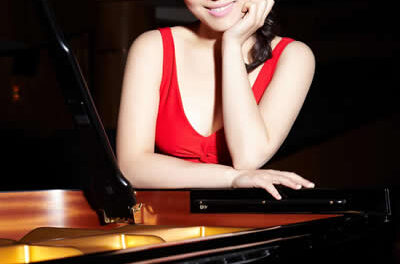Even for those of us with just a couple of kids, it would have been hard to imagine them growing up and becoming amicable world-class musical compatriots as you watched them fighting, tearing into each other and generally creating an atmosphere of turmoil and chaos. So, it is with great admiration and respect that I give a tip of my hat to Mr. and Mrs. Ying for producing four siblings who have grown up to form one of the finest young string quartets on the world stage today. Janet, Timothy, Phillip and David Ying formed the Ying Quartet in 1992 in the small town of Jesup, Iowa and rose to prominence by snagging the coveted 1993 Naumburg Chamber Music Award and being signed to recording contracts with EMI and then Telarc. They are currently Quartet-in-Residence at the Eastman School of Music. They made their first performance at Duke University under the auspices of the Chamber Arts Society and Duke Performances.
Ravel’s lone string quartet, written while still a student at the Paris Conservatoire, is a sensual masterpiece that has few equals. Its first movement is like falling into a big down comforter or the serenity and peace after sex. What was heard, instead, was a performance that mistook unusually slow tempos for profundity and the dreamy, impressionistic character that is the defining characteristic of this composition. The playing was more expressive and forthcoming in the faster second and fourth movements, but the luscious, rhapsodic third movement was more like a stagnant pond than a flowing, living river. It is rare that I encounter a performance that causes me to almost dislike, or at least be bored by, a work that is one of my favorites. Fortunately, this did not continue as the rest of the program seemed to be more in synch with their temperament and strengths.
Pianist Christopher Taylor joined the Ying clan for a performance of Peter Lieberson’s Piano Quintet. Taylor made some exuberant introductory remarks that helped whet our collective whistles for this exciting and unrelenting work. This is the rare, previously unheard work that immediately grabs your attention and makes you want to hear it again. Virtuosic, with a rhythmic spikiness that dazzles and continuously intensifies, Taylor and the Yings were magnificent in their ensemble synchronicity. Intermission was welcomed in order to catch our breath.
Like someone trying to gain entrance into an exclusive club, it is a tough battle to get a public airing of a major four-movement piano quintet other than the big three of Brahms, Schumann and Dvořák. On this program we had the unique opportunity to hear the first of two written by the Hungarian composer Ernst von Dohnányi. Like the Ravel Quartet, this was a very early work – written when the composer was only 17 and listed as his Opus 1. The footprint of Brahms is all over this piece. It was presented to the old man in 1895, and Brahms was so impressed that he helped champion the piece. In fact, Dohnányi’s quintet is so closely tied to Brahms that it was sometimes derisively referred to as “Brahms’ second piano quintet.” As can be expected, this is an expansive, lush, romantic and Romantic work that is fairly typical of late 19th century European music. Mr. Taylor is an “in your face” partner as he constantly leans in towards the quartet and conducts with his head. The quartet played with great expression, dynamic range and personal investment in this lovely work that I strongly recommend having a go at if you are not familiar with it.
As if being rewarded for putting up with two piano quintets that were not one of the top-three chartbusters, the quintet returned to play the scherzo of the celebrated Dvořák Quintet. While leaving, I heard several comments along the line of “I wish they’d have played the whole Dvorak instead of the others.” Well, you can please some of the people some of the time, etc, etc.











